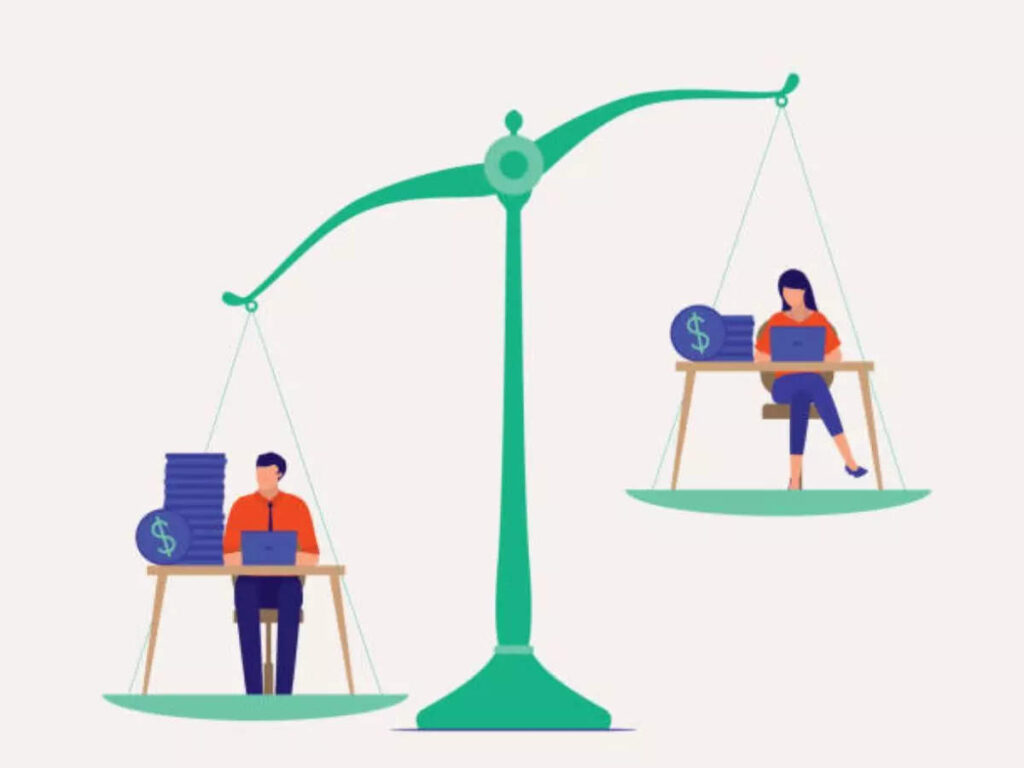
We live in a nation like India, which is striving to become a global economic giant and has one of the fastest expanding economies in the world. We neglect to consider the fact that until we attain “equal pay for equal effort”, India would not be able to become an economic powerhouse. The issue of unequal pay for equal labour may be explored under several aspects, including how the constitution guarantees it, where discrimination is permissible and where it is not, and most crucially, the gender pay gap. Furthermore, several businesses, including the entertainment industry, which is seen to be progressive, confront the problem of gender pay gap, with actresses earning far less than male performers in many women-centric films. This is also true for a variety of other sectors.
Equal pay for equal effort is not specifically stated to be a basic or even a constitutional right in the Indian constitution. Although the Indian Constitution did mention in its Directive Principles of State Policy, under Article 39, that all states should ideally direct their policy towards securing equal pay for equal work for both men and women, and also that men and women are to be treated equally in matters of public employment. It has been incorporated into the Constitution through the interpretation of Articles 14, 15 and 16. They are necessary for the governance of the country, and it is the duty of the state to take them into consideration while making laws.
The principle of Equal Pay for Equal Work was first discussed in Kishori Mohanlal Bakshi v. Union of India in 1962, where the Supreme Court pronounced that it could not be enforced in court. However, it was only in 1987 that it acquired appropriate recognition through the Mackinnon Mackenzie case. The issue on hand was a demand for equal compensation for female and male stenographers. The Court found favour with female stenographers because it supported equal pay. The Supreme Court declared in Randhir Singh v UOI that, while the notion of “equal pay for equal work” is not directly stated in our Constitution as a basic right, it is unquestionably a constitutional goal under Articles 14, 16 and 39(d) of the Constitution. This right can, therefore, be enforced in cases of unequal scales of pay based on gender discrimination.

EXCEPTIONS TO THE RULE OF EQUAL PAY FOR EQUAL WORK
Right now, equal payment for equal labour is a basic right. It is, however, not an absolute right. There are several exceptions to it. These exclusions are not explicitly documented anywhere, and they, too, arose through a succession of incidents. Some argue that these are not exceptions, but rather circumstances when the principle of equal pay for equal effort does not apply. The Supreme Court concluded in F.A.I.C. and C.E.S. v. Union of India that individual pay rates might be imposed for government officials holding the same office and performing identical work based on differences in degree of responsibility, dependability, and secrecy. The court further stated that fair pay is determined by the nature of the labour performed and not by mere volume of work.
Importance of equal pay for equal work can be different in many workplaces. Talking about any organisation that holds a composition of male and female workers offering equal pay, they create a more competitive workforce that can provide their business with a wide range of benefits. Many pay systems perform differently such as demonstrating your organisation’s values to employees, increasing efficiency and motivation, attracting top talent, and aligning your company’s social responsibilities. It not only provides these benefits, but it also assists firms in avoiding heavy fines. If you do not implement enough equal pay measures, the legal claims that follow can be costly ordeals. Furthermore, lack of equal pay policies might result in uninspired employees, a negative attitude against management, and an overall unhealthy and unproductive workforce.
Paternalistic approach still stands firm and society treats men as superior beings and this attitude manifests itself into low-paying jobs for women. Switching of jobs can be considered as another case of exception. Men typically change jobs in order to earn more money, whereas women prefer a better working environment over higher pay.
The enormous salary disparity that exists in our country across all industries is a cause for alarm, even as India’s GDP approaches that of major foreign countries recently overtaking the United Kingdom. According to research by the WageIndicator Foundation and IIM-Ahmedabad, the wage gap between men and women grows with women’s age, job experience, and educational qualifications. These must be addressed in every organisation in order to maximise profit and, in reality, enhance living.

Sanjay Yadav
Sanjay Yadav is a MBA-RD professional by education. He has completed his education in Bachelor of science with PCM from Ewing Christian College(AU. He is an avid reader and loves to play online games in his free time.

